I rented the Willow game a couple of times as a kid and was pretty impressed with it. But then, I was a bigger fan of Capcom's NES gamse than Nintendo's own back then. I think there's a new Willow series on Disney+ now. I watched the original movie a couple of times as a kid but it's been a very long while so I don't remember much about it.
Willow Review Rewind
|
|
See PixlBit's Review Policies

On 11/30/2022 at 01:00 PM by Jamie Alston Rooting for the little guy. |

For anyone looking for a streamlined NES Zelda experience without the esoteric puzzles.
Willow is a 1988 dark fantasy movie I never watched as a child. Yet the name still rings a nostalgic bell in my brain. Strangely, I didn’t consciously pay it much attention until I stumbled across the NES game sometime in the mid-2000s. But seeing the name and characters on the cover felt deeply familiar in a way I still grapple to understand. Maybe I saw the movie poster and heard its name in passing as a kid but didn’t think much of it until discovering the video game later in life. Initially released by Capcom in 1989, Willow was a calculated attempt to create a game with broader appeal since it was based on a property with characters familiar to its audience. Fortunately for Capcom, those calculations were entirely correct.
The game plays fast and loose with the plot from the movie. The principal characters remain intact but are introduced differently throughout the game. The story starts with two spirit messengers, Bavmorda of the sky and Fin Raziel of the earth. Bavmorda, consumed with greed for power, transforms Fin Raziel into a small animal unable to oppose her plans for world domination. Willow Ufgood is chosen from his village to defeat Bavmorda and her mighty army.
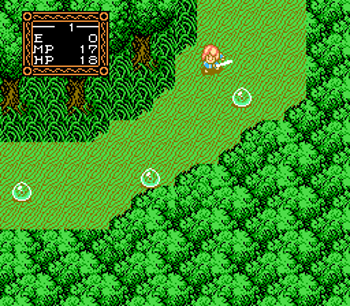
Where the arcade version is a side-scrolling action game, the NES port plays more like The Legend of Zelda. As with that game, Willow is played from a top-down viewpoint with a heavy focus on exploring a sprawling world. Much like Link, his primary weapon is a sword wielded by swinging in an arc motion or a forward strike. And he also gains an assortment of shields and secondary offensive and defensive abilities. Unlike in Legend of Zelda, however, the game also includes RPG elements such as experience points and HP/MP.
All equipment and items are either found in treasure chests or given to you by someone to help you on the journey. There are no shops or currency at all in the game. But that isn’t to say that acquiring weapons doesn’t come at a cost. And this is where things get interesting.
While you can easily acquire new swords to increase attack strength, wielding them proficiently requires enough experience points to level up properly. If his current level is too low, Willow just sluggishly swings the blade as if it weighs a ton. But as he gains levels, his dexterity improves so he can make quick slashes to fend off attacks with greater ease. This implementation of the experience system gives players the impetus to battle enemies instead of merely skipping to the next screen through much of the game.
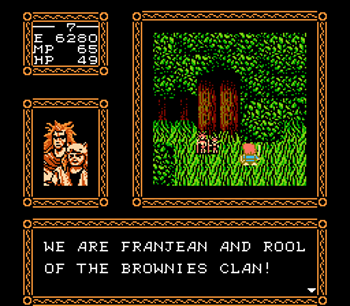
Enemies mostly appear at random on the field or in dungeons. Sometimes their placement can be hard to avoid, and other times just plain unfair. Most annoying are the crabs that spring from water and quickly ram you with their shell. Other enemies can only be defeated with one particular sword, but the game doesn’t explain that to you beyond a quick blurb from one of the NPCs. What’s worse is that several of these enemy types can wreak havoc with their magic abilities and make short work of you if caught unawares.
The other downside is the game’s checkpoint system. If you die, you’ll continue based on the last experience level you reached. This can be problematic if you advance a good portion of the journey by collecting items and discovering new areas only to die before gaining enough EXP to reach the next level. All that progress is lost, and you’re forced to redo everything again, sometimes starting at a checkpoint far from the area where you died. Also, in place of battery backup saves, the game uses an 18-character password system to save progress. It was acceptable for the time, but now it’s a real hassle to be stuck in an age of savestates and ample data storage.
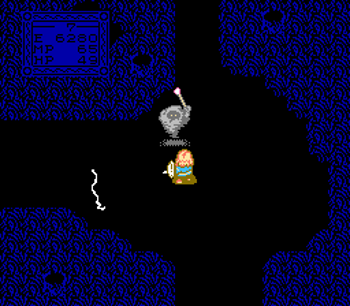
As a late 80s NES game, the graphics are consistent with the reputation for high quality for which Capcom is famous. The bright colors and detailed character sprites make for a satisfying adventure. The soundtrack is scored by Harumi Fujita- famed composer of Bionic Commando and Mega Man 3, among other Capcom gems. She uses her NES audio mastery to construct a medley of memorable chiptunes.
Of particular note, the village theme sounds like an uptempo rendition of Percy Faith’s "The Theme from 'A Summer Place'". I can’t say for sure if it was intentional, but it’s hard to deny the proximity of the notes. But given the ubiquitousness of “A Summer Place” from the 60s onward, it is a reasonable assumption that Fujita likely drew inspiration from the song while putting her spin on the composition. In any case, it sounds great, and I love it.
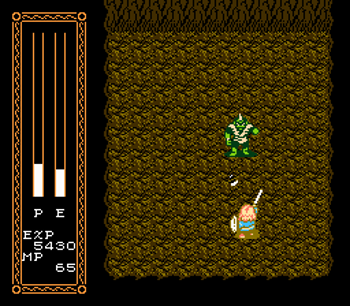
Despite its shortcomings, Willow impresses because it manages to be its own thing despite being based on pre-existing media. It’s not just a direct movie-to-game translation or a Zelda clone. Nor is it merely another RPG. Instead, it takes the best parts of all three and offers something reasonably original. The Zelda-like exploration has the vastness you’d expect without the sometimes obtuse environment puzzles. The light RPG elements give the player enough incentive to battle enemies without demanding a serious time commitment to level grinding.
It was a smart move to avoid directly adapting the story beats of the movie into the game. Instead, it allowed Capcom to make an exciting action RPG that complemented the movie’s fantasy setting. It’s nice to see a licensed game that prioritizes the potential of the characters and their world over the cash-in mentality of making “Popular Movie: But a Video Game.” Well done, Capcom.







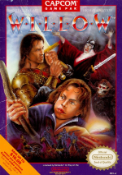


Comments